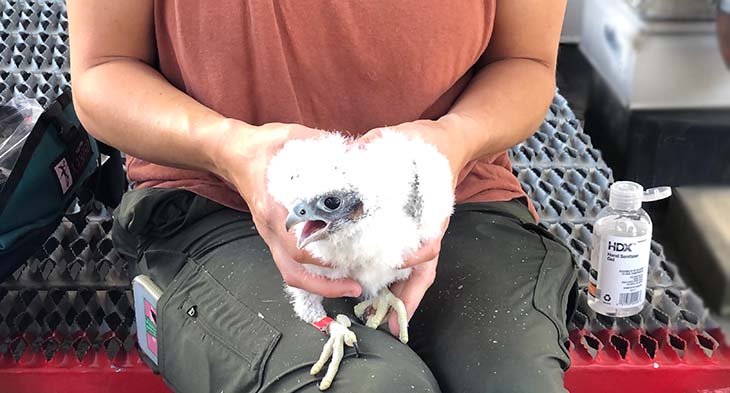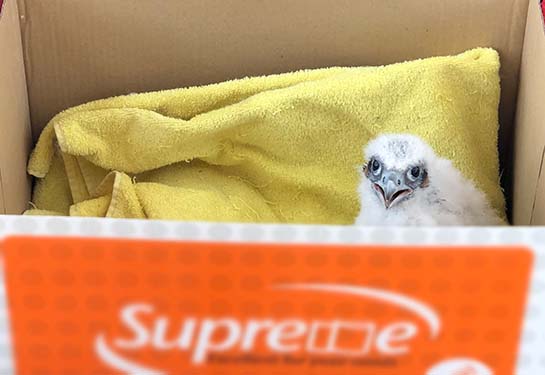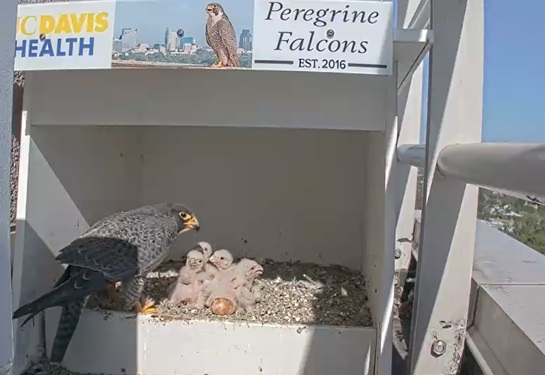Researchers band peregrine falcon chicks to track progress
Two peregrine falcon chicks were banded by falcon experts from UC Santa Cruz this week on the roof of the UC Davis Medical Center. The protective falcon parents screeched, and dive bombed the researchers as they fitted and secured the metal leg bands.
The falcon chicks were fitted with the bands to provide researchers with valuable data on peregrine survival rates, dispersal distances and population growth rates. Each band has a unique nine-digit number and the phone number and email of the banding laboratory to help identify the bird in the future.
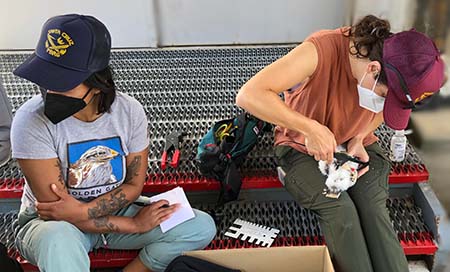
“We have special permission from California Fish and Wildlife to enter the nest one time during the breeding season to reduce any kind of invasive disturbance on the nest,” said Zeka Glucs, director of the Predatory Bird Research Group at UC Santa Cruz. “During this time, we place bands on them that will mark them and allow us to follow them through their life.”
The ideal time to band peregrine falcons is when they are just over three weeks old, when their bodies are almost full grown. The chicks go from 30 grams (about 1 ounce) to 1,000 grams (about 2.2 pounds) in just three weeks.
“Banding these falcons will allow us to keep tabs on their productivity and where they are breeding so we can track how the population is expanding since their recovery as an endangered species,” added Glucs.
Since at least 2015, peregrine falcons have made their home at the medical center. This year the falcons had four eggs in their nest and two did not hatch.
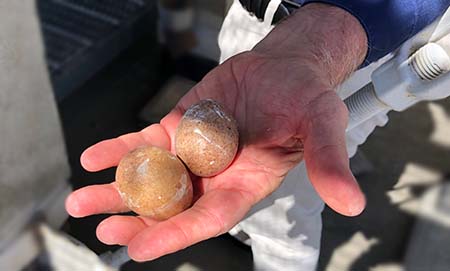
Looking ahead, the falcon chicks will soon begin to stand and walk on their feet. Days later the chicks will open their wings and run across the gravel surface on the rooftop.
Visually their wings will look longer and fuller as their wing feathers grow. Their body feathers will give them a speckly look that camouflages them on the nest.
Stay tuned to the video livestream to keep up with the peregrine chicks and enjoy watching them grow!
Related stories
- Eggscellent news: peregrine falcons have returned – and they are expecting
- Welcome to the world – peregrine falcon eggs begin to hatch
